Facebook’s killer Social VR demo puts the real world on notice
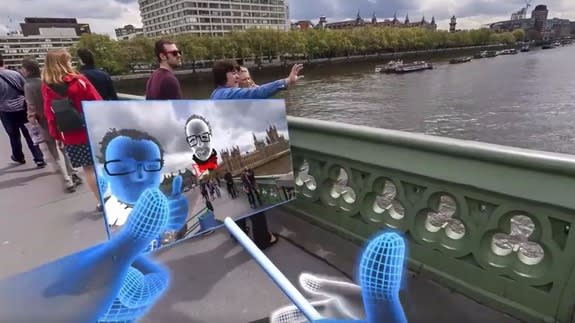
Bravo, Facebook. Social VR is now officially something I want in Facebook. You made me want it, damn you.
Ever since Facebook bought Oculus VR for $2 billion in 2014, Mark Zuckerberg has made clear his intention to merge social networking with virtual reality. While it made intuitive sense, I really thought Zuckerberg was paying lip service to the idea.
With its immersive headgear that cuts you off from the outside world and the pricey graphics-laden hardware on the back-end, the Oculus Rift system seemed tailor made for deep-dive gaming, not chatting up your Aunt May on Facebook.
SEE ALSO: Facebook just made VR selfie sticks a thing
Now, I, along with millions of others who watched the Day 2 F8 Keynote live stream on Wednesday, feel differently.
Facebook’s latest Social VR demo was like the world’s best sizzle reel and it has us all hankering for virtual steak. As we watched, Facebook CTO Mike Schroepfer donned an Oculus Rift headset and grabbed a pair of Oculus Touch controllers. Some 30 miles away, Michael Booth, part of Facebook’s newly formed Social VR team, also donned a headset and grabbed his own set of controllers. And then the scene switched to a sort of gray landscape where a pair of mannequin heads could be seen floating in space. They moved about and it became clear they were the virtual representations of Booth’s and Schroepfer’s heads. Booth’s mannequin had glasses and a beard.

Image: Facebook
“If you actually go to Michael Booth’s Facebook page,” said Mike Beltzner, Facebook's product manager & business lead, who is part of the team working on Facebook Social VR, “you’ll see the live broadcast of him in Menlo Park. He’s a dude with a white beard and glasses.”
But before you start imagining Booth stepping into some giant booth that scanned his slightly grizzled visage, Beltzner explained that Facebook simply drew those facial details on the virtual mannequin. It was a bit of stagecraft in what was, in fact, a live demo of VR code written expressly for F8.
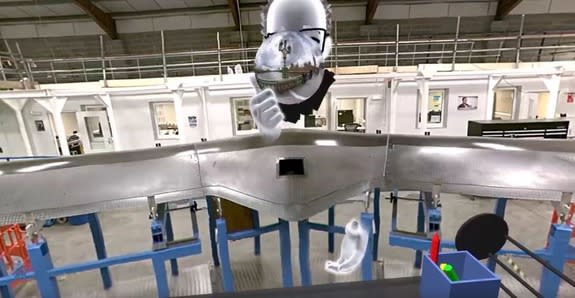
Image: Facebook
Of course, the animated mannequins were just a small part of it. Facebook’s Social VR demo showed how Booth and Schroepfer could draw in virtually reality and pick up a virtual 360 photo sphere (which looked like a transparent globe and reminded me of something straight out of Harry Potter’s world). They entered the sphere and were transported to London inside the 360 image. They even picked up a virtual selfie stick. Booth shared their virtual selfie to his actual Facebook page.
At that precise moment, people near my office may have heard the sound of my head exploding.
Not another Second Life
The idea, Beltzner told me was to “give a sense of what we mean when we say enabling virtual and social presence in VR.” A crucial part of the Facebook Social VR experience, based on this demonstration, would be to make people feel like they are inhabiting the same space. It’s about sharing an experience, but “not to go into space and shoot aliens,” added Beltzner.
What we saw, by the way, is just one set of Facebook Social VR experiences and Beltzner feels confident that we’ll soon see more.
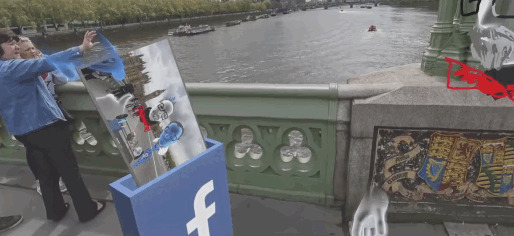
Image: facebook
Perhaps, though, it’s worth tempering out enthusiasm with a memory of the last big foray into a social virtual existence: Second Life.
A decade ago, this 3D virtual world was the thing. Not only was it a vast, and growing environment full of tens of thousands of human avatars, but people could buy virtual real estate and shop in virtual stores. Big brands made big bets (remember Circuit City?). It flamed out, big time (Second Life lives, but it has almost zero social media influence).
How do we know Facebook Social VR isn’t another Second Life?
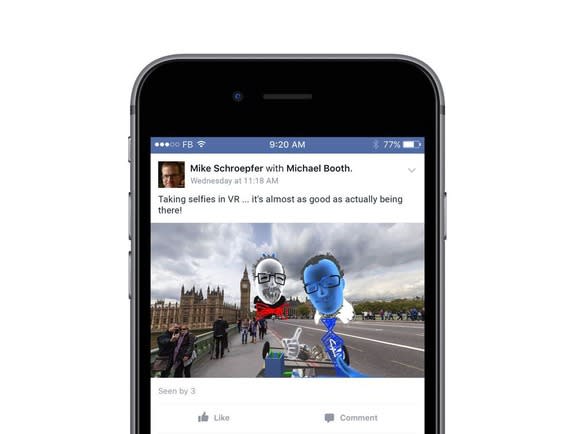
Image: Facebook
Facebook’s Beltzner told me there are a number of crucial differences. First and foremost is Facebook Social VR’s access to the Social Graph. “That was the challenge Second Life and other systems had. They were fundamentally about trying to create new groups of friends and social interactions as opposed to ones you’re already out and having in the world,” he said.
The second big difference is that while virtual social networks like Second Life were focused on building new virtual worlds, Facebook wants to connect users to the experiences they have every day. That’s why the demonstrations we saw on Wednesday quickly thrust the participants into the real, albeit static, world of 360 images of London and Facebook’s Aquila Internet Drone development facility.
Virtual reality’s hardware reality
Facebook’s Social VR efforts may be able to avoid the pitfalls of Second Life, but there’s a larger limiting factor: the hardware. Oculus Rift is a $600 System, not counting the Oculus Touch gear that puts your hands in the action. To use it, you need a thousand-dollar gaming PC. Gamers are already buying into this package, but for average consumers, the ones Facebook envisions using Social VR in the not-too-distant future, it’s a prohibitively expensive proposition.
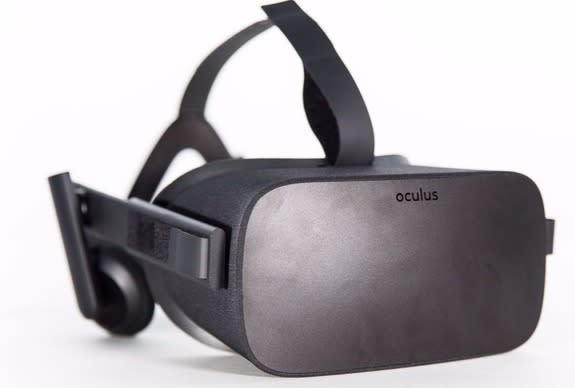
Image: Brittany herbert/mashable
Samsung Gear VR, which is powered by Oculus technology, is the more affordable ($99 not counting your smartphone) and available option, but the visual quality will be lower and it leaves out the virtual touch experience.
Beltzner told me, however, that Facebook’s commitment to the social VR experience extends beyond Oculus Rift. In the future, there will be social immersion experiences across a wide spectrum of hardware. And that future may not be all that far away.
“You’ll be surprised how quickly we get to a point where you can use your hands even with mobile VR devices,” said Beltzner.
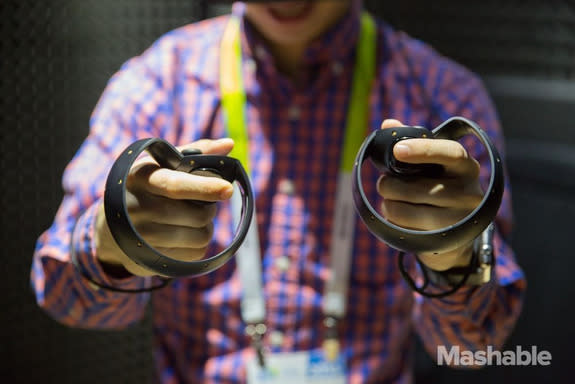
Image: brittany herbert/mashable
I asked Beltzner for an actual timeline. When will Facebook users be able to step into their own virtual experiences?
His response: “This is the first of a bunch of updates you will see around social VR,” but added there are too many factors he can’t control right now to give me delivery date.
“As soon as we can identity the timeline, we’re going to speed through to production so we can get it in everyone’s hands," he said.
In other words, Facebook Social VR is virtually here.

